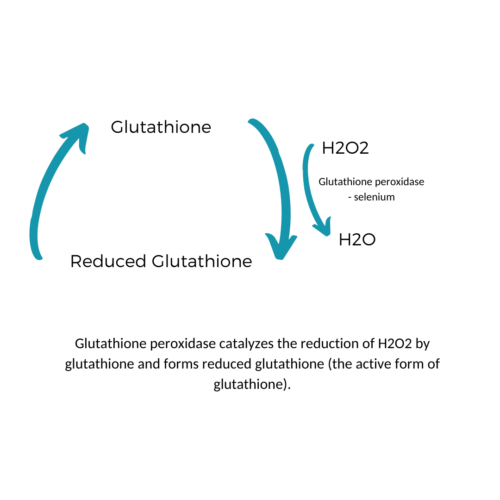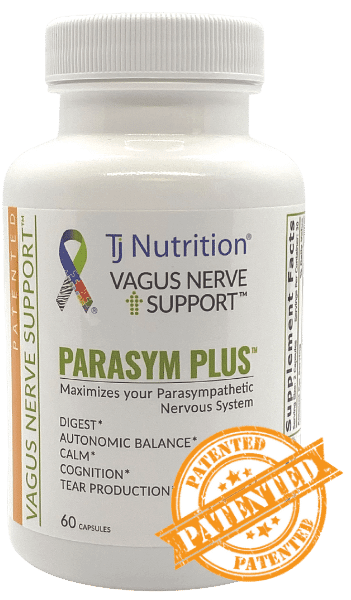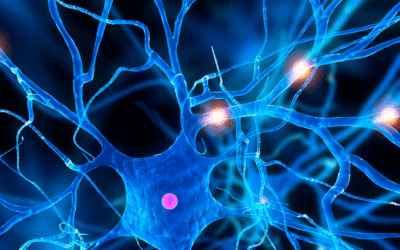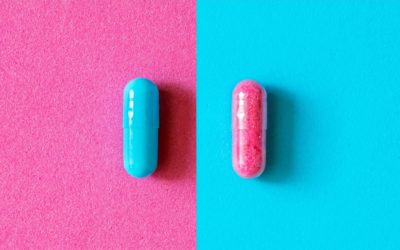Can we do better than N-acetylcysteine(NAC)?
There has been a great deal of talk about N-acetylcysteine and its importance in boosting cellular immunity and supporting immune function. But can we do better than N-acetylcysteine alone? Yes, we can!
N-acetylcysteine (“NAC”) is an amino acid that is the body’s limiting factor to making its own glutathione (the master antioxidant of the body). By supporting antioxidant levels, the damage that oxidation causes (vascular damage, tissue and organ damage, and changes in brain chemistry) can be minimized.
What does research tell us?
Research and clinical trials into the effects of NAC are vast, but its ability to support immune function is receiving quite a bit of attention lately. Why is that?
N-acetylcysteine (NAC) increases glutathione levels and research shows that even moderate improvements in glutathione levels have dramatic effects on lymphocytes (immune cells).¹ This has been the most studied in cases of human immunodeficiency virus (HIV)-infected patients, who responded with a significant increase in all immunological functions tested, including natural killer cell activity.
To fully understand how this is effective, it is important to understand that disorders of the immune system result in chronic inflammation and oxidation. Not only is this inflammation and oxidation damaging, but it also lowers the immune system and causes dramatic (and even lethal) symptoms. At this point, the condition must be addressed as not only infectious but as inflammatory and oxidative. This is where N-acetylcysteine comes in.
What is oxidation?
A consequence of inflammation is oxidation. Inflammatory cells release many chemicals designed to kill germs, weaken connective tissue, and allow vessels to “leak” a bit. This invites healing agents into the area of inflammation (such as a swollen ankle, for example). One of the chemicals released by inflammatory cells is Reactive Oxygen Species (“ROS”). It sounds like it should be good for us (oxygen is good, right)? But oxygen intracellularly is damaging because it makes the cell unstable (electrons are lost). An attempt is made to steal electrons and the instability spreads. Antioxidants are needed to control this damaging oxidation.
The master antioxidant of the body (glutathione) is not helpful when introduced into the body because it is not absorbed well (this includes transdermal, liposomal, oral, suppositories, and even inhaled glutathione). Instead, our bodies must make their own glutathione, and the body is equipped to do so! By ingesting NAC, the body begins making its own glutathione almost immediately!
Can we do better than N-acetylcysteine alone?
To maximize the ability of NAC to support immunity and antioxidant levels, we need to:
- Recycle the glutathione that is produced. Both Vitamin C and alpha-lipoic acid can recycle glutathione, allowing levels of glutathione to increase.⁴ But this is not a matter of just adding more ingredients! Too much Vitamin C is actually pro-oxidative (the opposite of antioxidative)!⁵
- Supply selenium which is required by glutathione peroxidase to produce glutathione.

The active form of glutathione is called “reduced” glutathione. To maximize reduced (“active”) glutathione, an enzyme called Glutathione peroxidase is needed. It converts glutathione to reduced (active glutathione). It does so by catalyzing the reduction of H2O2 (hydrogen peroxide) to H20 (water) which then forms reduced glutathione. Glutathione peroxidase is a selenium-containing enzyme. We need sufficient levels of selenium to produce glutathione peroxidase.
Dr. Diana Driscoll, Founder of TJ Nutrition has worked tirelessly to combine all of these ingredients – in just the right proportions—to support the production of active glutathione for the body.
References:
Dröge, Wulf, and Raoul Breitkreutz. “Glutathione and immune function.” Proceedings of the Nutrition Society 59.4 (2000): 595-600. [Article]
Johnston, Carol S., Claudia G. Meyer, and J. C. Srilakshmi. “Vitamin C elevates red blood cell glutathione in healthy adults.” The American journal of clinical nutrition 58.1 (1993): 103-105. [Oxford Academic]
Chakraborthy, Aratirika, et al. “Antioxidant and pro-oxidant activity of Vitamin C in oral environment.” Indian Journal of Dental Research 25.4 (2014): 499. [PubMed]
Perl, Andras. “Oxidative stress in the pathology and treatment of systemic lupus erythematosus.” Nature Reviews Rheumatology 9.11 (2013): 674. [Article]
Minich, Deanna M., and Benjamin I. Brown. “A review of dietary (Phyto) nutrients for glutathione support.” Nutrients 11.9 (2019): 2073. [MDPI]
Tibullo, Daniele, et al. “Biochemical and clinical relevance of alpha-lipoic acid: antioxidant and anti-inflammatory activity, molecular pathways and therapeutic potential.” Inflammation Research 66.11 (2017): 947-959. [SpringerLink]











